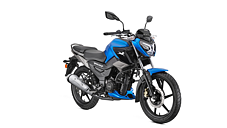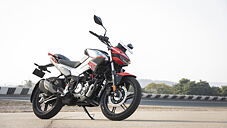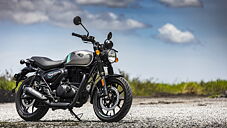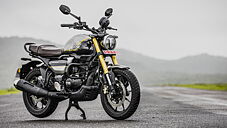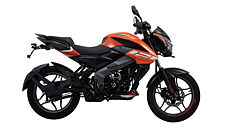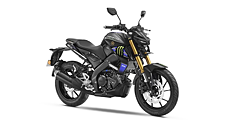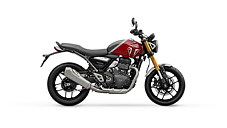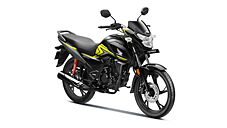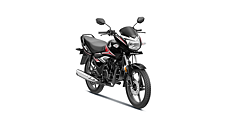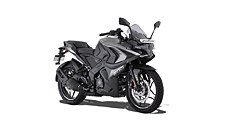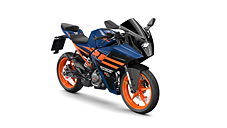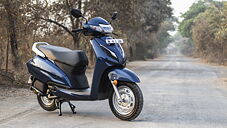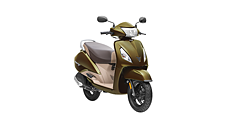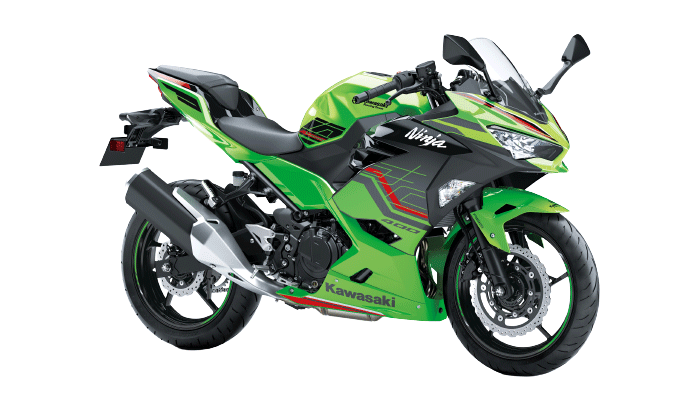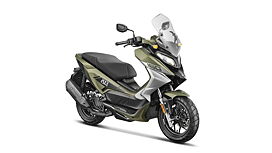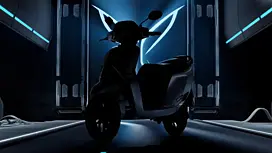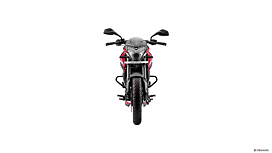Introduction

A machine is developed for a reason. It could either make your life easy by easing your job or could make your life hell, by taking away your job. But there are some machines that could add some excitement to your life and the Versys 1000 was developed for the same. But do we really need a bike this big? Well, the answer would have been a straight no, if this article was being published in 2000 but over the last few years, things have changed drastically. I have put on a lot of weight and my mum still doesn’t like my tea. But on a serious note, things have really changed for motorcycle enthusiasts in terms of overall infrastructure. Additional perks are better and well-laid out roads and befriending technology.
With the help of smartphones and GPS, we are able to access areas which were inaccessible initially and this has made exploring quite an easy task. The price of the bikes have gone down as finally some of them are assembled here and not directly imported. And finally the most important change is the arrival of the right motorcycle to tour across the country. After touring on under-powered motorcycles for years, we have finally hit the jackpot. With the Tiger range, Triumph got the adventure bikes to India, whereas Suzuki started with the V-Strom 1000. This development prompted Kawasaki to introduce the Versys brand in India. While we expected something in the middle-weight category like the Versys 650 to come to the country, India Kawasaki Motors took the plunge and gave the Versys 1000 to India’s growing adventure and touring enthusiasts. Being just a three year old motorcycle, the Versys 1000 failed to get the required attention, partly, because of its boxy look. But with the 2015 version, the engineers at Kobe have tried to solve the same problem. We spent some time with this new Versys 1000 to find out if it is the answer to India’s growing purpose-based motorcycle enthusiasts.
Design

The previous generation Versys 1000 was known for its bad looks, especially, the front fascia. But just like its other motorcycles, Kawasaki has given a new design to the new Versys 1000 that one will not easily find fault with. The new sharp styled fairing is the major reason why the new Versys 1000 looks really good, because it resembles the Ninja family. The sharper creases on the fairing, gives it a very unique character which makes it look like the motorcycle of the main lead in a sci-fi flick. The aggressively slanted twin headlamps look better than the Ninja 1000, which has more of a sober look. Attached to this new fairing, is the bigger and adjustable windscreen, which will help you ride comfortably.

Take a side view and you will start appreciating the way the Versys 1000 looks. The bulbous yet sharp fuel tank is the most noticeable feature. Due to the all-black colour combination used on the frame and the fairing, the Versys 1000 looks like an ideal choice for the next Batman movie. The exhaust has been slightly redesigned over its predecessor and now gets the heat metal shield, which won’t be of practical use if you have the panniers fitted. This four into one exhaust system looks sporty but doesn’t really look big as it does in the pictures.I find the tail section quite different from the rest of the bike, because that’s where an important aspect of touring lies– the capability to carry luggage. The LED tail lights are very attractive and being big in size, the tail-section of the Versys 1000 looks perfect. Overall, the Versys 1000 looks the way a tourer is supposed to look and for the same reason, it could easily attract attention when parked alongside other super sport motorcycles.
Equipment

The engine is the most important part of a bike but there are quite a number of features and equipment, which increases the fun quotient of the motorcycle. The Versys 1000 has enough of it. The instrument cluster of this tourer is almost identical to the ones seen on the Ninja 1000 but honestly, I don’t quite like the overall design. It just doesn’t look as good as the motorcycle. It is hard to believe that it’s designed by the same company that made the cluster on the Z1000 and the highly acclaimed Ninja H2. It is at least a generation behind when it comes to the overall layout but I won’t say the same about the technology that is loaded onto it.
The dashboard has a decently lit digital display that shows tonnes of details like the speedometer, odometer, two trip meters, fuel range, overall fuel efficiency and floating fuel efficiency, time. Anti-lock braking system is standard. In addition to this, the Versys 1000 gets the trademarked Kawasaki Traction System with three modes, which can be operated on the fly, using controls on the left handlebar. A tourer with such technology makes long distance travel fun and safe.

Just like the other CBU Kawasakis, the switchgear of the Versys 1000 feels top notch. The handle bar grip and the rear view mirrors are of very good quality and work satisfactorily. Kawasaki has smartly integrated two power sockets on the cluster, for people who want to charge their phones and other electrical equipment on the go. However, the charger has to be retrofitted onto the bike. The Versys 1000 comes with a main stand as standard and it gets brownie points for its practicality and ease of use . I managed to put it on the stand with ease. Just under the huge grab rail, Kawasaki has given what they call the KQR – quick release. With just a single click, you can attach the panniers and release them and I find this extremely convenient because when you are touring, you are bound to get tired by the end of the day and you really don’t want to spend time removing the panniers. With KQR, you can hit the bed pretty soon.
Engine & Gearbox

Kawasaki has packed the Versys 1000 with its proven 1043cc engine which is loved by Indians because of its inline-four engine configuration. It’s the same engine which does the duty on the Z1000 and the Ninja 1000. However, in the case of the Versys 1000, the Japanese manufacturer has played with the power figures to suit the bike’s nature. This smooth engine churns out 118bhp of power, which may not look much, but what you will get is the incredible amount of torque spread across the range. Being a tourer, Kawasaki has tuned the engine to give better low-end torque as early as 2,500rpm and it feels so easy to get this 260kg machine from stationary to around 100kmph. The mid-range too is more than enough for the Versys 1000 to maintain constant triple digit speed. It is so good that it manages to pull this heavy metal laden bike from 3000rpm in fifth gear. But what surprised me is the slight vibrations from this proven engine after 7,000rpm. For a moment, I thought I was riding a Korean motorcycle, but even after having rubber engine mounts, it is quite disappointing to see this from Kawasaki. But again, for touring comfortably on Indian roads, you really don’t need to be at such high rpm, nullifying the possibility of experiencing the vibrations for long durations.

The Versys 1000 gets a six-speed gearbox with one-down, five-up configuration. The gearshifts are butter smooth, but you won’t really need to play much with it once you hit the highway. The Japanese maker has reconfigured the gear ratios, with the first to third being shorter and the latter being on the taller side to be fuel efficient. Talking about fuel-efficiency, the Versys 1000 gave me a constant 16kmpl during the entire testing phase, which basically means, that it could run for approximately 330kms with its 21-litre fuel tank. This is good for a tourer of this size, but if you ride it very sanely, you could cross the 400km barrier. My riding was a mixture of high-speed touring, city riding and sometimes opening up the throttle completely on empty roads.
The mighty Versys comes with slipper clutch as standard and it really feels light.The Versys 1000 is loaded with two power modes – low and high. The low mode restricts the Versys to 75 per cent of the power and delivers this in a progressive manner. I found this mode quite useful riding around the ghats, where you need enough power and torque to go around corners. Because of excellent fuelling and throttle response, I suggest the rider to stick to this mode in the beginning if you are upgrading from a low displacement motorcycle. But if you intend to have the maximum fun, switch to full power and the lowest level of traction control – this is when you unleash this monster to its full capacity and things become very exciting. Just like the Ninja 1000, the Versys 1000 is equipped with Kawasaki’s KTRC traction control system that gives the rider three options to choose from. This system is a boon to riders as all three modes works seamlessly. While the first and second modes maintain optimum traction and provide sharp acceleration out of corners in the non-slippery condition, the third mode provided me with riding stability, especially when I was riding inside a forest road, where the roads were quite wet. Just to give a heads up, you need to cut off your throttle input to change the power and traction control modes.
Ride & Handling

The Versys 1000 is a very tall motorcycle. With an overall height of 1399mm, it is not as tall as the Suzuki V Strom but because of its kerb weight of 260kg, it is slightly difficult to handle. There is no doubt that the Versys 1000 is very versatile, but considering the fact that the Versys 1000 is not a light motorcycle, this attribute has to be played with very cautiously. I am 6.2ft tall and I faced few problems with the bike. Like my parking lot has a slight elevation, so taking out the Versys 1000 could pose a problem if you are trying to move the bike with your own effort. Riding the motorcycle is easy but living with it is slightly difficult. I would suggest short riders to look somewhere else to fulfil their touring appetite.

With its wide single handlebar and comfortable riding position, the Versys 1000 can do long distance like no one else can. But there is a problem. At high speeds, the windblast can tire you quickly. Being a tourer, a rider expects that his bike will help him travel long distance in less time but the Versys 1000 doesn’t really agree to this notion. The motorcycle gets a tall front visor, which can be adjusted using two hand operated knobs and honestly, I found this quite useless. For my height, this visor doesn’t work at all and causes helmet buffeting and this left me confused. The Versys 1000 is designed for tall riders but its visor design says otherwise. Maybe more time should have been spent here by Kawasaki engineers. I cannot say the same for the long and wide seat of the Versys 1000. In my entire life I have not come across such a comfortable riding seat for a motorcycle. Kawasaki should attempt to make sofa sets too.
The Versys 1000 eats up bumps really well that’s because the 2015 version gets a revamped KYB preload suspension where they have softened rebound and compression to improve rider comfort. Riding the bike in the city is not that easy because the overall body proportion that makes it difficult to cut between the vehicles. Taking the Versys 1000 around the bend is not as friendly like the Ninja 1000. The tall sports tourer just doesn’t feel comfortable going around the corners because of its weight and larger wheelbase. The bike rides on 17-inch wheels that get Bridgestone 120/70 and 180/55 at the front and rear respectively. These are sport bike tyres and can be used only for touring. It can’t be doubled up for dual-sport or adventure riding. The braking on this bike is excellent. The dual 310mm disc at the front and 250mm disc at the rear stops this mighty 262kg machine whenever you want to and then you have the anti-lock braking system (ABS) to your rescue.
Verdict

With the Versys 1000, the Kawasaki has catered to the growing tourer enthusiasts in the country. The country’s infrastructure has been improving rapidly and there are more than enough places for the Versys 1000 to explore. At a price tag of Rs 12.9 lakh (ex-showroom Pune), the Versys 1000 is almost Rs 2.05 lakh cheaper than the Suzuki V-Strom, plus it gets two more cylinders which we like. It gets all the technology you find in the bigger Kawasaki super sport bikes like the ABS, slipper clutch, two power modes and the patented KTRC technology. Being directly imported from Japan, the Versys 1000 is available only in Kawasaki exclusive showrooms, which limits its reach to prospective customers. But if you are looking for a reliable big tourer, then your search should end at the Kawasaki Versys 1000 but be ready to struggle a bit if you are not tall enough.
Gallery
1/55
Double Tap to Zoom



















![[object Object] ThumbNail Images [object Object] ThumbNail Images](https://imgd.aeplcdn.com/642x361/bikewaleimg/ec/17985/img/l/2015-Kawasaki-Versys-1000-48722.jpg?v=201711021421&q=80)
![[object Object] ThumbNail Images [object Object] ThumbNail Images](https://imgd.aeplcdn.com/642x361/bikewaleimg/ec/17985/img/l/2015-Kawasaki-Versys-1000-48723.jpg?v=201711021421&q=80)
![[object Object] ThumbNail Images [object Object] ThumbNail Images](https://imgd.aeplcdn.com/642x361/bikewaleimg/ec/17985/img/l/2015-Kawasaki-Versys-1000-48724.jpg?v=201711021421&q=80)
![[object Object] ThumbNail Images [object Object] ThumbNail Images](https://imgd.aeplcdn.com/642x361/bikewaleimg/ec/17985/img/l/2015-Kawasaki-Versys-1000-48725.jpg?v=201711021421&q=80)
![[object Object] ThumbNail Images [object Object] ThumbNail Images](https://imgd.aeplcdn.com/642x361/bikewaleimg/ec/17985/img/l/2015-Kawasaki-Versys-1000-48726.jpg?v=201711021421&q=80)
![Kawasaki Versys 1000 [2017-2018] Image Kawasaki Versys 1000 [2017-2018] Image](https://imgd.aeplcdn.com/272x153/bw/models/kawasaki-versys-1000-standard-540.jpg?20190103151915&q=80)
